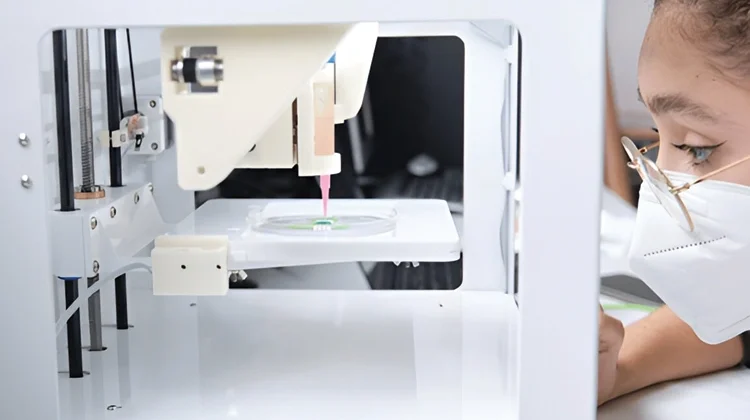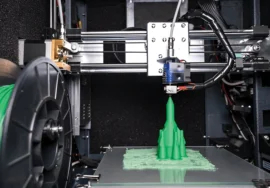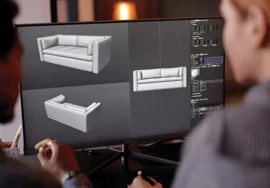
Creating Customized Anatomic Models for Patient-Specific Care
The landscape of healthcare is undergoing a transformative shift, driven by technological advancements that are redefining patient care. At the forefront of this revolution is 3D printing, a process that is gaining traction in the medical field. One of its most promising applications lies in creating customized anatomic models for patient-specific care.
Understanding the Power of 3D-Printed Anatomic Models
Surgeons rely on two-dimensional images like X-rays, CT scans, and MRIs to plan complex procedures. While these images give valuable information, they often fall short of conveying the intricate three-dimensional anatomy of a patient. 3D-printed anatomic models offer a tangible and comprehensive representation of the patient’s anatomy, allowing healthcare providers to gain a deeper understanding of the surgical site.
Benefits of Patient-Specific Anatomic Models
- Enhanced Surgical Planning: By providing a detailed physical model of a patient’s anatomy, 3D-printed models enable surgeons to plan procedures, find potential challenges, and develop optimal surgical approaches.
- Improved Patient Outcomes: With a more thorough understanding of the patient’s unique anatomy, surgeons can reduce surgical time, decrease complications, and increase the likelihood of successful outcomes.
- Enhanced Communication: These models ease effective communication between healthcare providers, allowing for collaborative discussions and decision-making. They can explain complex medical conditions to patients and their families clearly and understandably.
- Simulation and Training: 3D-printed models offer invaluable opportunities for medical students and residents to practice surgical techniques and develop their skills in a safe and controlled environment.
The Process of Creating Anatomic Models
Creating a 3D-printed anatomic model involves several key steps:
- Image Acquisition: Detailed medical images, such as CT scans or MRIs, are used to capture the patient’s anatomy.
- Data Processing: Image data is processed using specialized software to create a three-dimensional digital model.
- Model Design: The digital model is refined to highlight specific anatomical structures or pathologies.
- 3D Printing: The designed model is printed using a 3D printer, using materials that mimic the properties of human tissue.
- Model Preparation: The printed model is prepared and sterilized for the clinical setting.
The Future of 3D Printing in Medicine
As technology continues to advance, the potential applications of 3D printing in medicine are ballooning. Researchers are exploring biocompatible materials to create functional tissue and organs, offering hope for patients with organ failure.3D-printed implants and prosthetics are being developed to give personalized and effective solutions for individuals with disabilities.
In conclusion, 3D printing is revolutionizing the field of medicine by enabling the creation of customized anatomic models that are transforming patient care. By providing healthcare providers with unparalleled insights into patient anatomy, these models are improving surgical planning, enhancing patient outcomes, and facilitating effective communication. As this technology continues to evolve, it is poised to play an even more significant role in shaping the future of healthcare.
Overcoming Challenges and Expanding Horizons
While the potential of 3D-printed anatomic models is immense, there are challenges to address. The accuracy of the models is paramount, requiring precise image acquisition and processing techniques. Additionally, the cost of 3D printing and the time required to produce models can be factors limiting widespread adoption. However, ongoing advancements in technology and materials are steadily reducing these barriers.
The integration of 3D printing into clinical workflows is also essential. Collaboration between healthcare providers, engineers, and technicians is crucial to streamline the process and ensure seamless integration into patient care pathways.
Specific Applications Across Medical Specialties
The impact of 3D printed models extends across various medical specialties:
- Orthopedics: Surgeons can meticulously plan complex joint replacements, fracture repairs, and spinal surgery.
- Cardiothoracic Surgery: Detailed models of the heart and surrounding structures aid in planning intricate procedures like valve replacement and coronary artery bypass grafts.
- Oncology: Visualization of tumors and their relationship to surrounding tissues improves surgical planning and radiation therapy delivery.
- Craniofacial Surgery: Complex facial reconstructions can be planned with precision using 3D models.
- Pediatrics: Congenital anomalies can be better understood, and surgical strategies developed using patient-specific models.
Ethical Considerations
As with any emerging technology, ethical considerations must be carefully addressed. Issues such as patient privacy, data security, and the potential for misuse of personal medical information require thoughtful deliberation and robust safeguards.
Conclusion
3D printing is undeniably transforming the landscape of medicine. The creation of customized anatomic models represents a significant leap forward in patient care. By enabling precise surgical planning, improving patient outcomes, and enhancing communication, this technology is poised to revolutionize healthcare delivery. As research and development continue to advance, we can anticipate even more groundbreaking applications of 3D printing in the years to come.





